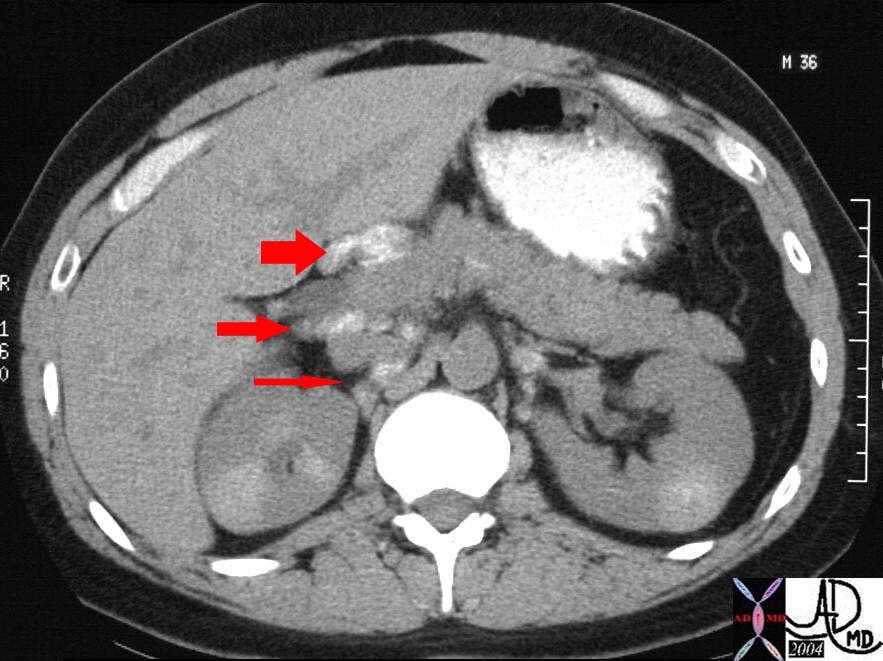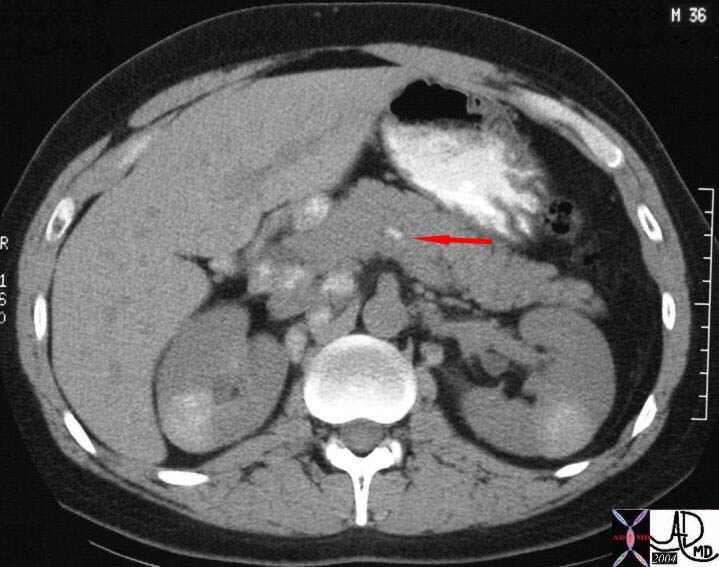The lymphatic channels originate around the acini and initally following the capillaries and subsequently following the arterioles and arteries. No lymphatics are found around the islets of Langerhans. The lymphatics of the pancreas follow the branches of the celiac axis and the SMA that supply the pancreas, with the nodal supply of the head following the hepatic artery and the supply of the body and tail following the splenic artery. The final regional pathway for the celiac nodes and the SMA nodes will be to the paraortic nodes.
The nodes of the hepatic vessels completely surround the head, and are found anterior, posterior, superior, and inferior to the head. The head of the pancreas shares these nodes with the duodenum with which it is intimate contact.
 Lymph nodes of the head of the pancreas Lymph nodes of the head of the pancreas |
| The CT through the mid abdomen and kidneys is from a patient with sarcoidosis in whom there is extensive but fine calcifications in the kidneys and the celiac axis lymph nodes surrounding the pancreas. These are abnormal lymph nodes but the case serves to demonstrate the lymphatic associations of the head of the pancreas. There are nodes anterior to the head in the porta hepatis (fat arrow), and in the portocaval space posterior to the head. (middle arrow) More posteriorly (thin arrow) small calcified nodes are seen between the IVC and the right crus of the diaphragm.
Courtesy Ashley Davidoff MD 26477b02arrow |
 Intrapancreatic lymph node Intrapancreatic lymph node |
| In this CT of the same 36 year old patient with sarcoidois a small calcified intrapancreatic node is seen at the junction of the neck and body of the pancreas. There are also nodes anterior and posterior to the head in the porta hepatis and more posteriorly small calcified nodes are seen between the IVC, the right crus of the diaphragm and the right kidney.
Courtesy Ashley Davidoff MD 26477b03arrow |
